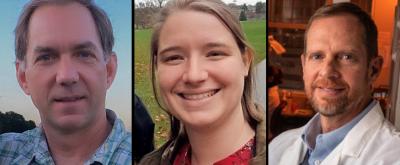A new study reveals how photoreceptors grown from stem cells might extend biological wires, known as axons, to contact existing neurons.
The finding has implications for future treatment of retinal diseases that cause blindness, including age-related macular degeneration and rare diseases such as retinitis pigmentosa, Usher syndrome, Stargardt disease, and Best disease.
People living with these diseases, which are currently uncurable, ultimately lose vision due to destruction of light-sensitive cells called rods and cones. Neuroscientists are working on therapies to grow these cells, also known as photoreceptors, from stem cells and transplant them to restore damaged tissue.
However, while the ability to manufacture lab-grown photoreceptors has advanced considerably, it remains challenging to “install” them. Once transplanted, the photoreceptors must grow axons to connect with existing inner neurons so the light they detect is transmitted via signals to the brain.

University of Wisconsin Researchers Timothy Gomez, Sarah Rempel, and David Gamm.
The University of Wisconsin School of Medicine and Public Health research team showed that photoreceptors derived from stem cells are initially able to grow axons on their own to connect to other cells but lose that ability within 40 to 80 days. However, they found that mobile helper cells can assist photoreceptors that are no longer able of independently growing axons by pulling and dramatically stretching parts of them.
“Understanding how photoreceptors reach out to make these connections brings us another step closer to being able to transplant stem–cell derived photoreceptors to cure blindness,’’ said Timothy Gomez, professor of neuroscience at the school, and the study’s senior author.
Sarah Rempel, a postdoctoral researcher who led the study and works in the Gomez lab, collaborated with the research team led by co-author Dr. David Gamm, professor of ophthalmology and visual science to successfully generate retinal organoids. Retinal organoids are three-dimensional models of the retina derived from human pluripotent stem cells.